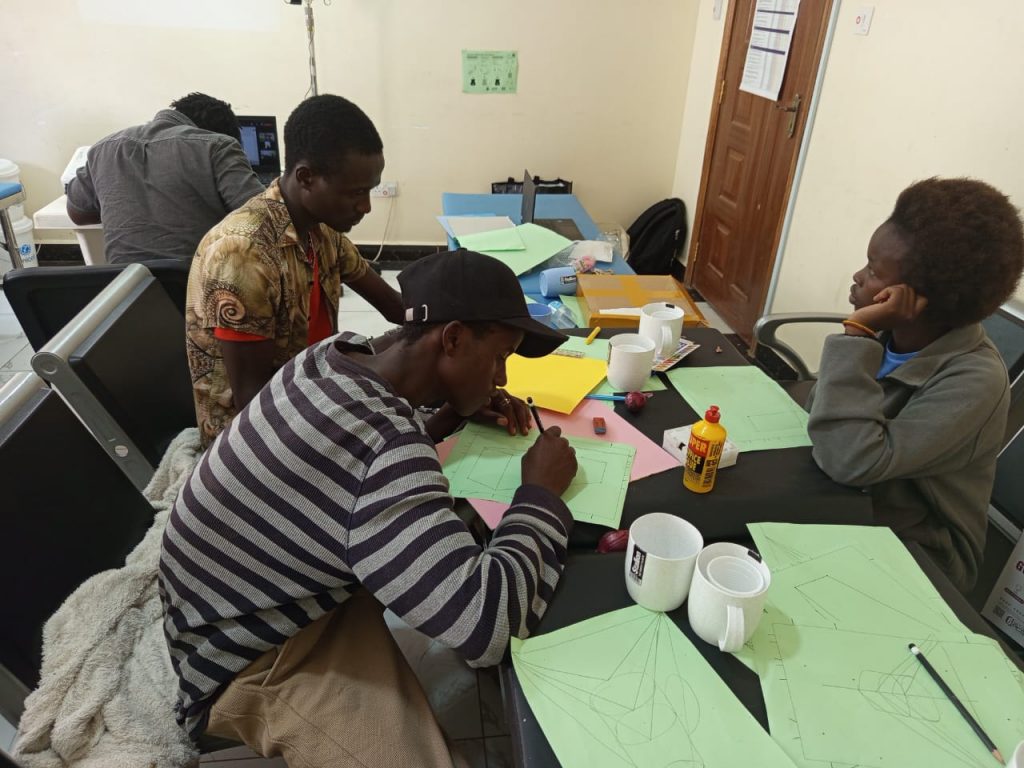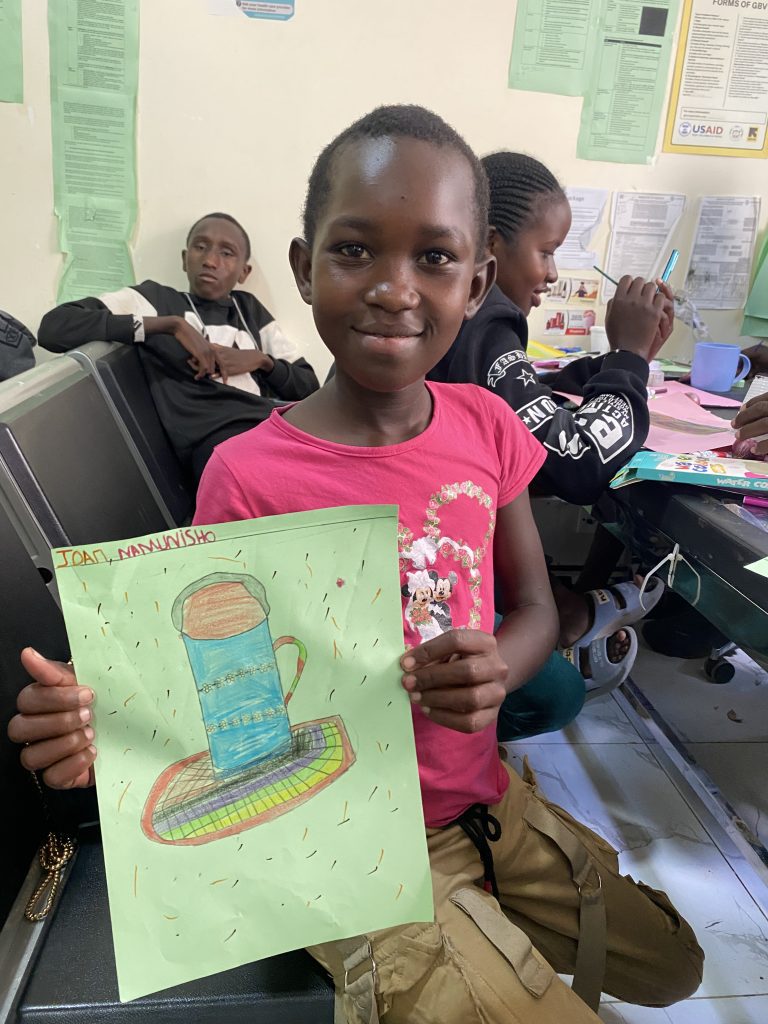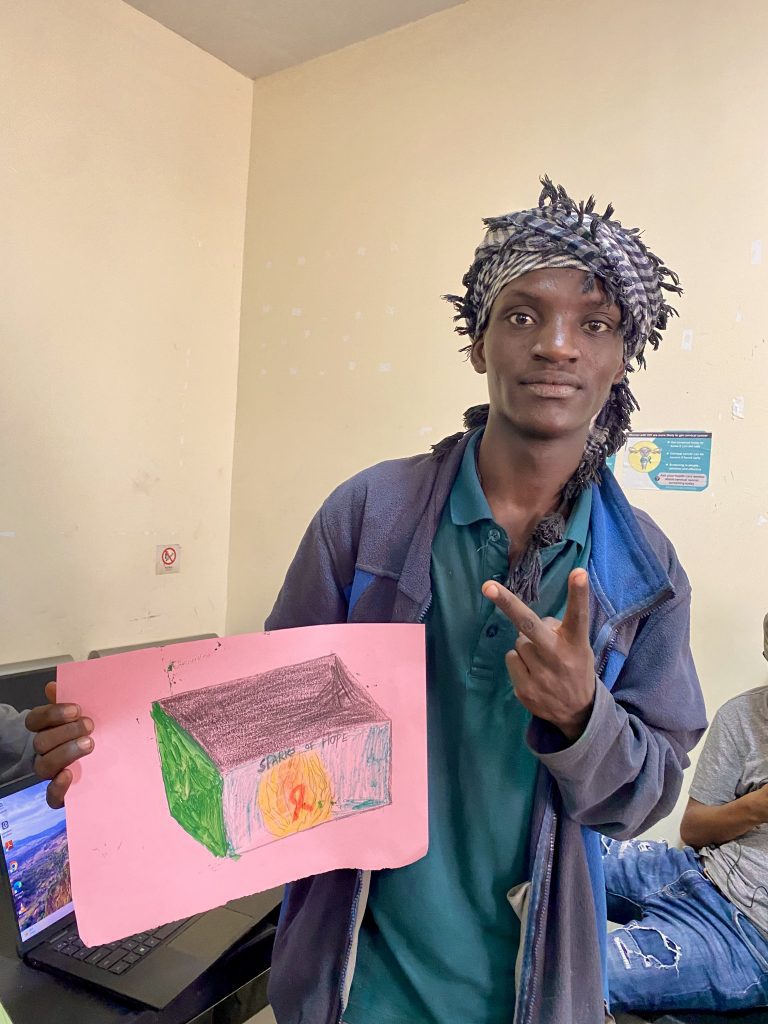We don’t always see the full picture.
Sometimes we need a second point of view.
In our latest online art class, I introduced the idea of two-point perspective to the group — these children who face daily challenges most of us can hardly imagine. Our session didn’t take place in a typical classroom. As always, it was held in a hospital waiting room — a space usually reserved for silent anticipation and fluorescent light. But as always with magic the room is transformed.
Victor, who leads the workshops on-site, arrived early and laid out the supplies: coloured pencils, rulers, crayons, mugs, and cardboard boxes. Bit by bit, the room filled with laughter, focus, and the gentle scratch of pencils. The walls — once clinical — became alive with creativity.

What began as a drawing lesson turned into something deeper: a reflection on how we all need more than one angle to understand the world — and ourselves.
Drawing Boxes, Opening Minds
Each child sat at long tables or even an examination bench. They started with two dots on the horizon. One vertical line between them. Then: structure, depth, discovery. It was their first time encountering perspective drawing, and yet, they approached it with curiosity and courage.
They drew boxes and transformed them into buildings, colourful blocks, even imagined cities. Cathy drew the University of Nairobi Tower, proud of the landmark. Another shaded their box in red and green, making the colours sing off the page.
These were more than exercises in geometry. They were acts of imagination, of power, of saying: “I see this differently now.”

Why Two Perspectives Matter
Two-point perspective teaches us that nothing exists in isolation. Every shape, every object is defined by the angles it connects to. It takes two vanishing points to reveal the depth — to move from flatness to dimension.
And this truth stretches beyond paper.
These children live between two perspectives too:
- Hope and hardship
- Resilience and vulnerability
- Dreams and daily uncertainty
Being affected by HIV, they’ve had to figure out so much on their own. And yet, in these two hours, they were allowed to pause, to be children learning something new, something structured, something beautiful.
Art as a Quiet Space
Art gave them a moment of calm. It gave them lines to follow and colours to choose. It helped them breathe more deeply — not just to express themselves, but to begin to understand that there’s more than one way to see the world, more than one way to be seen.
What I hope is that this lesson in space — in seeing more — gave them more than a technical skill. I hope it helped them realise that they are allowed to step back and shift perspective. That even when the path forward seems narrow, another vanishing point may yet open a new view.
Because perspective is not just about how we draw. It’s about how we live.
What is Two-Point Perspective?
Two-point perspective is a way of drawing that makes flat shapes look 3D. It uses two “vanishing points” on the horizon line — one on the left, one on the right. Lines from the object go back to these points, helping artists show how something like a box or a building would look if you saw it from an angle. It helps give drawings depth and space, just like in real life.
